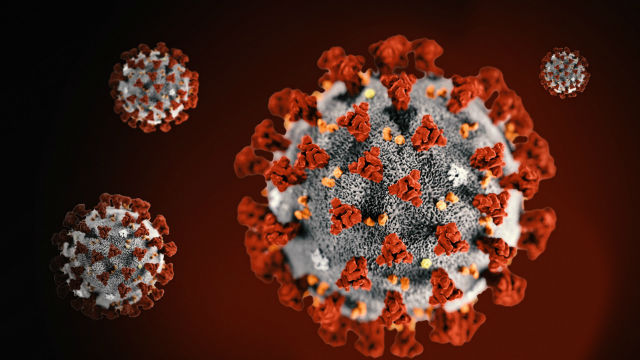
Employer Guidance For Michigan’s Extended Stay Home Order
(EO 2020-77)
BY: JEFFREY D WILSON, YOUNG BASILE
On May 7, 2020, Governor Whitmer signed Executive Order 2020-77, titled “Temporary requirement to suspend activities that are not necessary to sustain or protect life” (the “Order”). The Order takes effect immediately and extends Michigan’s prior shelter-in-place order to May 28, 2020 at 11:59 p.m. As with the prior orders, the Order greatly restricts business and governmental operations, and broadly requires that all individuals within the State of Michigan stay home. Importantly, however, the Order contains provisions to permit Michigan’s manufacturing centers to reopen on Monday, May 11, 2020.
RESTRICTIONS ON BUSINESSES AND REOPENING
As with the prior Orders, no person or entity shall operate a business or conduct operations that require workers to leave their homes or places of residence, subject to the following exceptions:
Workers who are necessary to conduct minimum basic operations
Workers who are strictly necessary to allow the business or operation to maintain the value of inventory and equipment, care for animals, ensure security, process transactions (including payroll and employee benefits), or facilitate the ability of other workers to work remotely are considered necessary to conduct minimum basic operations and are permitted to work.
Workers who are necessary to sustain or protect life/Critical Infrastructure Workers
We previously wrote that businesses that employ critical infrastructure workers may continue in-person operations, subject to certain conditions. Critical infrastructure workers are those workers described by the Director of the U.S. Cybersecurity and Infrastructure Security Agency in his guidance of March 19, 2020 on the COVID-19 response (available here).
In addition, suppliers, distribution centers and service providers that provide necessary services and products to critical infrastructure workers (and are so designated) are themselves critical infrastructure workers. Those suppliers, distribution centers, and service providers may designate their own workers, suppliers, distribution centers, and service providers as critical infrastructure workers, but only to the extent necessary to support the original critical infrastructure entity.
Resumption of manufacturing activities
Effective at 12:01 a.m. on May 11, 2020, workers necessary to perform manufacturing activities may report to work. Manufacturing businesses that resume operations are subject to enhanced social distancing and sanitation measures, and these businesses must designate impacted workers in writing. These businesses must also:
1.) Develop a COVID-19 preparedness and response plan, consistent with recommendations in Guidance on Preparing Workplaces for COVID-19, developed by the Occupational Health and Safety Administration and available here. Such plan must be available at company headquarters or the worksite.
2.) Restrict the number of workers present on premises to no more than is strictly necessary to perform the in-person work permitted under the Order.
3.) Promote remote work to the fullest extent possible.
4.) Keep workers and patrons who are on premises at least six feet from one another to the maximum extent possible.
5.) Require masks to be worn when workers cannot consistently maintain six feet of separation from other individuals in the workplace, and consider face shields when workers cannot consistently maintain three feet of separation from other individuals in the workplace.
6.) Increase standards of facility cleaning and disinfection to limit worker and patron exposure to COVID-19, as well as adopting protocols to clean and disinfect in the event of a positive COVID-19 case in the workplace.
7.) Adopt policies to prevent workers from entering the premises if they display respiratory symptoms or have had contact with a person with a confirmed diagnosis of COVID-19.
8.) Adopt any other social distancing practices and mitigation measures recommended by the CDC.
9.) Conduct a daily entry screening protocol for workers, contractors, suppliers, and any other individuals entering the facility, including a questionnaire covering symptoms and suspected or confirmed exposure to people with possible COVID-19, together with temperature screening as soon as no-touch thermometers can be obtained.
10.) Create dedicated entry point(s) at every facility for daily screening, and ensure physical barriers are in place to prevent anyone from bypassing the screening.
11.) Suspend all non-essential in-person visits, including tours.
12.) Train workers on, at a minimum:
– Routes by which the virus causing COVID-19 is transmitted from person to person.
– Distance that the virus can travel in the air, as well as the time it remains viable in the air and on environmental surfaces.
– Symptoms of COVID-19.
– Steps the worker must take to notify the business or operation of any symptoms of COVID-19 or a suspected or confirmed diagnosis of COVID-19.
– Measures that the facility is taking to prevent worker exposure to the virus, as described in the COVID-19 preparedness and response plan required under section 11(a) of this order.
– Rules that the worker must follow in order to prevent exposure to and spread of the virus.
– The use of personal protective equipment, including the proper steps for putting it on and taking it off.
13.) Reduce congestion in common spaces wherever practicable by, for example, closing salad bars and buffets within cafeterias and kitchens, requiring individuals to sit at least six feet from one another, placing markings on the floor to allow social distancing while standing in line, offering boxed food via delivery or pick-up points, and reducing cash payments.
14.) Implement rotational shift schedules where possible (e.g., increasing the number of shifts, alternating days or weeks) to reduce the number of workers in the facility at the same time.
15.) Stagger start times and meal times.
16.) Install temporary physical barriers, where practicable, between work stations and cafeteria tables.
17.) Create protocols for minimizing personal contact upon delivery of materials to the facility.
18.) Adopt protocols to limit the sharing of tools and equipment to the maximum extent possible.
19.) Frequently and thoroughly clean and disinfect high-touch surfaces, paying special attention to parts, products, and shared equipment (e.g., tools, machinery, vehicles).
20.) Ensure there are sufficient hand-washing or hand-sanitizing stations at the worksite to enable easy access by workers, and discontinue use of hand dryers.
21.) Notify plant leaders and potentially exposed individuals upon identification of a positive case of COVID-19 in the facility, as well as maintain a central log for symptomatic workers or workers who received a positive test for COVID-19.
22.) Send potentially exposed individuals home upon identification of a positive case of COVID-19 in the facility.
23.) Encourage workers to self-report to plant leaders as soon as possible after developing symptoms of COVID-19.
24.) Shut areas of the manufacturing facility for cleaning and disinfection, as necessary, if a worker goes home because he or she is displaying symptoms of COVID-19.
Workers necessary to implement these safety measures may report to work immediately.
Additional Businesses That May Resume Operations
In addition to manufacturing facilities, workers who perform resumed activities are additionally defined as:
– workers who process or fulfill remote orders for goods for delivery or curbside pick-up;
– workers who perform bicycle maintenance or repair;
– workers for garden stores, nurseries, and lawn care, pest control, and landscaping operations;
– workers for moving or storage operations;
– workers who perform work that is traditionally and primarily performed outdoors, including but not limited to forestry workers, outdoor power equipment technicians, parking enforcement workers, and outdoor workers at places of outdoor recreation not otherwise closed under Executive Order 2020-69;
– construction workers; and
– real estate industry workers, including agents, appraisers, brokers, inspectors, etc.
These businesses are subject to unique social distancing measures and should consult their attorney and the Order to understand the specific requirements.
RESTRICTIONS ON GOVERNMENT
All government activities that are not necessary to sustain or protect life, or to supporting businesses and operations that are necessary to sustain or protect life, remain suspended.
RULES REGARDING FACE COVERINGS
All persons must wear face coverings when in any enclosed public space. All businesses and operations whose workers perform in-person work must, at a minimum, provide non-medical grade face coverings to their workers. Surgical masks and N95 masks should continue to be reserved for healthcare professionals and other first responders.
RESTRICTIONS ON INDIVIDUALS
As with the prior orders, individuals may leave their homes for limited purposes, such as engaging in outdoor activity, performing their jobs (if so permitted under the Order), obtaining medical care, purchasing necessary supplies, such as groceries, caring for family members, etc.
PENALTIES
Social distancing must be observed for those who leave home and all persons going out into public enclosed spaces must wear a mask. Willful violation of the Order is a misdemeanor.
Questions about how your company should handle the most recent employer guidance during COVID-19?. For more information, please contact the authorJeffrey D. Wilson or call the employment law team at Young Basile 248.649.3333.









